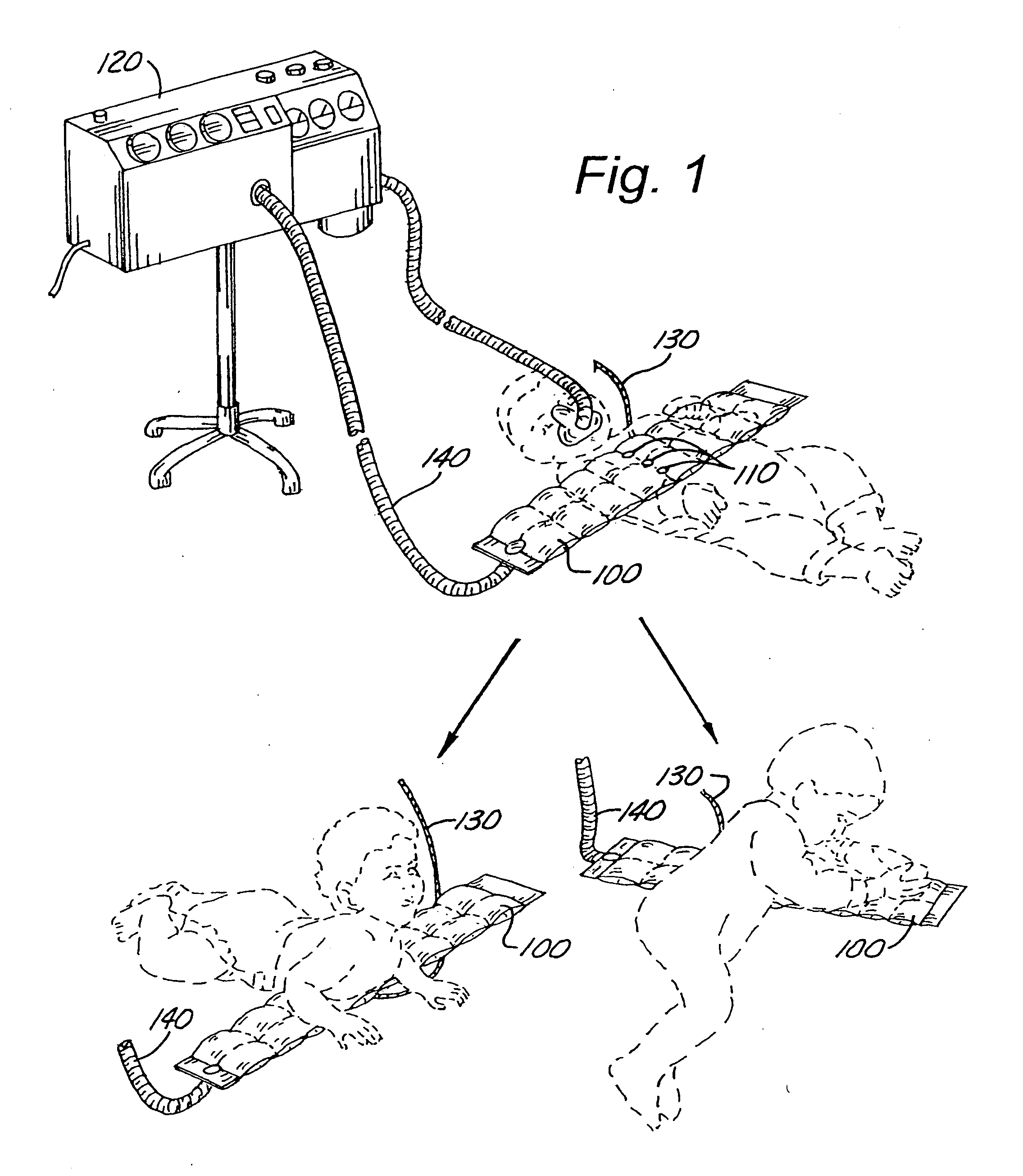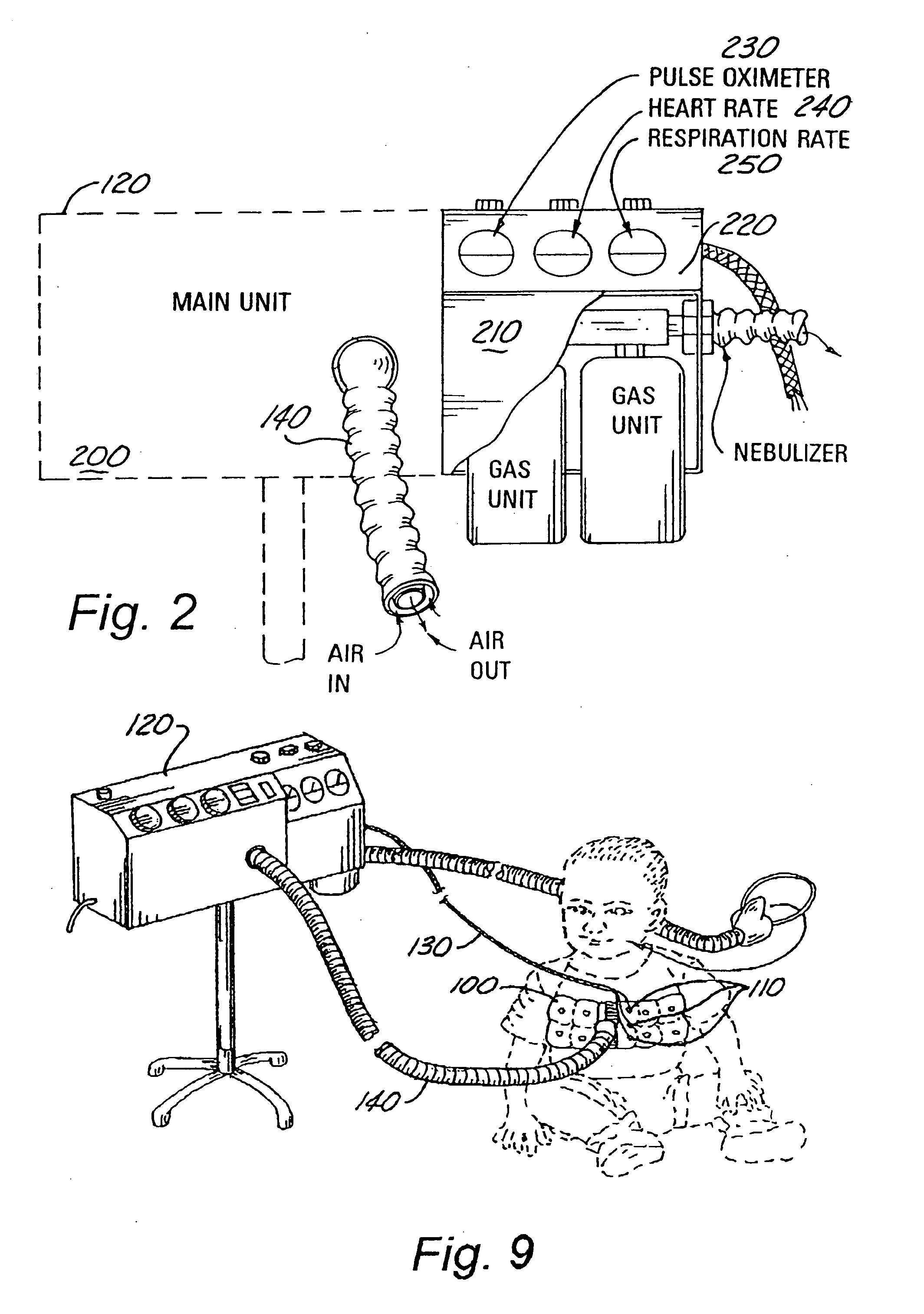External chest therapy blanket for infants
a chest therapy and infant technology, applied in the field of external chest therapy blankets for infants, can solve the problems of affecting the survival of infants, and affecting the health of infants, and achieving the effects of improving survival rate, and reducing the risk of infant mortality
- Summary
- Abstract
- Description
- Claims
- Application Information
AI Technical Summary
Benefits of technology
Problems solved by technology
Method used
Image
Examples
Embodiment Construction
[0028] Experience has shown that providing alternating pressure to the chest and / or upper torso area of a patient with a buildup of mucus is effective in reducing that mucus buildup. Accordingly, devices have been in use to effect the massage and compression of the lungs of patients in need of such treatment. To treat small human patients (from premature babies to toddlers), or any patient for whom traditional lung massage would be too physically traumatic, a device, illustrated in FIGS. 3 and 4 and called a J-blanket for massaging and compressing the lungs can be spread on a surface such as a table or bed and the child placed on the J-blanket. Alternatively, the J-blanket may be spread on the patient. The operative portion of the J-blanket, that is, all the portion of the J-blanket that can be operative, is sized such that only the upper torso of the patient is disposed on the J-blanket.
[0029] An overview of the lung massaging system is illustrated in FIG. 1. The J-blanket 100 is ...
PUM
 Login to View More
Login to View More Abstract
Description
Claims
Application Information
 Login to View More
Login to View More - R&D
- Intellectual Property
- Life Sciences
- Materials
- Tech Scout
- Unparalleled Data Quality
- Higher Quality Content
- 60% Fewer Hallucinations
Browse by: Latest US Patents, China's latest patents, Technical Efficacy Thesaurus, Application Domain, Technology Topic, Popular Technical Reports.
© 2025 PatSnap. All rights reserved.Legal|Privacy policy|Modern Slavery Act Transparency Statement|Sitemap|About US| Contact US: help@patsnap.com



